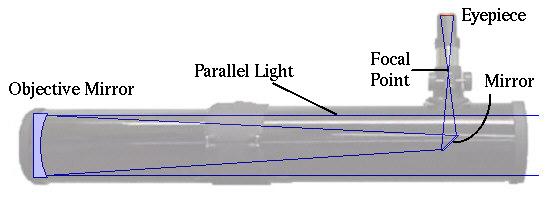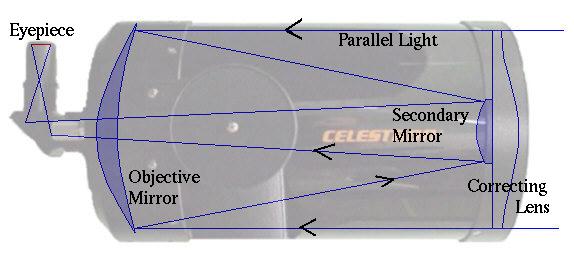Instead of a lens, reflecting telescopes use a concave mirror to concentrate the light to a single focal point. It has all the same basic elements of a refracting telescope:

The possible hazard with using a mirror for your objective (or primary) mirror is the light comes right back at you! In order to keep the observer from blocking the light path, a small mirror is placed within the telescope to bounce the light to the side for viewing and placement of the eyepiece. The above design is called a Newtonian Focus. The point where the telescope would naturally come to focus without the mirror is called Prime Focus.

Another important optical design is shown above. In a Cassegrain Telescope a convex secondary mirror sends the incoming light back through a hole in the objective (primary) lens and on to the eyepiece. The mirror must be parabolic shaped. Spherical mirrors are sometimes used because they are cheaper to make, but they introduce spherical aberration (the stars will appear distorted in shape). A Schmidt-Cassegrain Telescope uses a spherical objective mirror, but includes a correcting lens out front of the telescope (usually the mounting point for the secondary lens) to correct the spherical aberration.